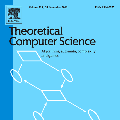It may seem very intuitive that for the maximization of the OneMax problem $\OM(x):=\sum_{i=1}^n{x_i}$ the best that an elitist unary unbiased search algorithm can do is to store a best so far solution, and to modify it with the operator that yields the best possible expected progress in function value. This assumption has been implicitly used in several empirical works. In [Doerr, Doerr, Yang: Optimal parameter choices via precise black-box analysis, TCS, 2020] it was formally proven that this approach is indeed almost optimal. In this work we prove that drift maximization is not optimal. More precisely, we show that for most fitness levels between $n/2$ and $2n/3$ the optimal mutation strengths are larger than the drift-maximizing ones. This implies that the optimal RLS is more risk-affine than the variant maximizing the step-wise expected progress. We show similar results for the mutation rates of the classic (1+1) Evolutionary Algorithm (EA) and its resampling variant, the (1+1) EA$_{>0}$. As a result of independent interest we show that the optimal mutation strengths, unlike the drift-maximizing ones, can be even.
翻译:似乎非常直观的是,对于最大程度地解决 OneMax 问题 $\ OM(x) : @sum ⁇ i=1 ⁇ n{x_i} : @sum ⁇ i=1 ⁇ n{x_i}$: 精英式的非公正搜索算法能够做的最好就是储存迄今为止最好的解决方案,并与在功能值方面产生最佳预期进展的操作者修改它。这个假设在一些经验性工作中被暗含地使用。在[Doerr, Doerr, Yang:通过精确黑盒分析的最佳参数选择,TCS,2020]中,正式证明这一方法确实几乎是最佳的。在这项工作中,我们证明漂移最大化不是最佳的。更确切地说,我们对大多数健康水平而言,在$/2美元和$2n/3美元之间,最佳的变异性大于漂移值。这意味着最佳的RLS比使步骤预期进展最大化的变异性(1+1) 进化Algorithm (EA) 及其再现变异性的结果相似。


